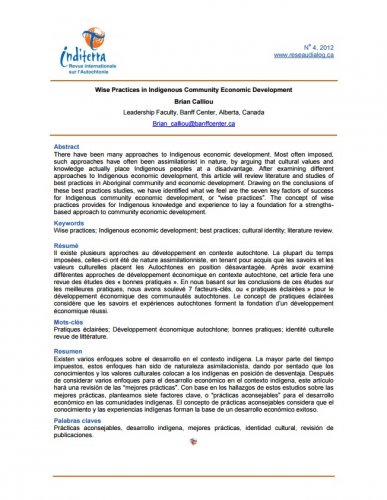There have been many approaches to Indigenous economic development. Most often imposed, such approaches have often been assimilationist in nature, by arguing that cultural values and knowledge actually place Indigenous peoples at a disadvantage. After examining different approaches to Indigenous economic development, this article will review literature and studies of best practices in Aboriginal community and economic development. Drawing on the conclusions of these best practices studies, we have identified what we feel are the seven key factors of success for Indigenous community economic development, or “wise practices”. The concept of wise practices provides for Indigenous knowledge and experience to lay a foundation for a strengthsbased approach to community economic development.
Download Wise Practices in Indigenous Community Economic Development
Table of Contents
1. Approaches to Indigenous Economic Development
2. Federal Government Policy on Indigenous Economic Development
3. Best Practices in Business and Management
4. Critique of Best Practices
5. The Wise Practices Approach to Economic and Leadership Development
6. Literature Review of Best Practices in Indigenous Community Economic Development
6.1 Harvard Project on American Indian Economic Development
6.2 National Centre for First Nations Governance
6.3 Institute on Governance
6.4 UN Development Program
6.5 DIAND Governance Action Plan
6.6 Friendship Centre Movement Best Practices in Governance and Management
6.7 Conference Board of Canada
6.8 Royal Commission on Aboriginal Peoples (RCAP)
6.9 Human Resources Development Canada
6.10 Comprehensive Community Planning Workshop
6.11 Public Works Management in First Nations Communities
6.12 Indigenous Research and Education, Charles Darwin University
7. Key Factors of Success
Conclusion
References





